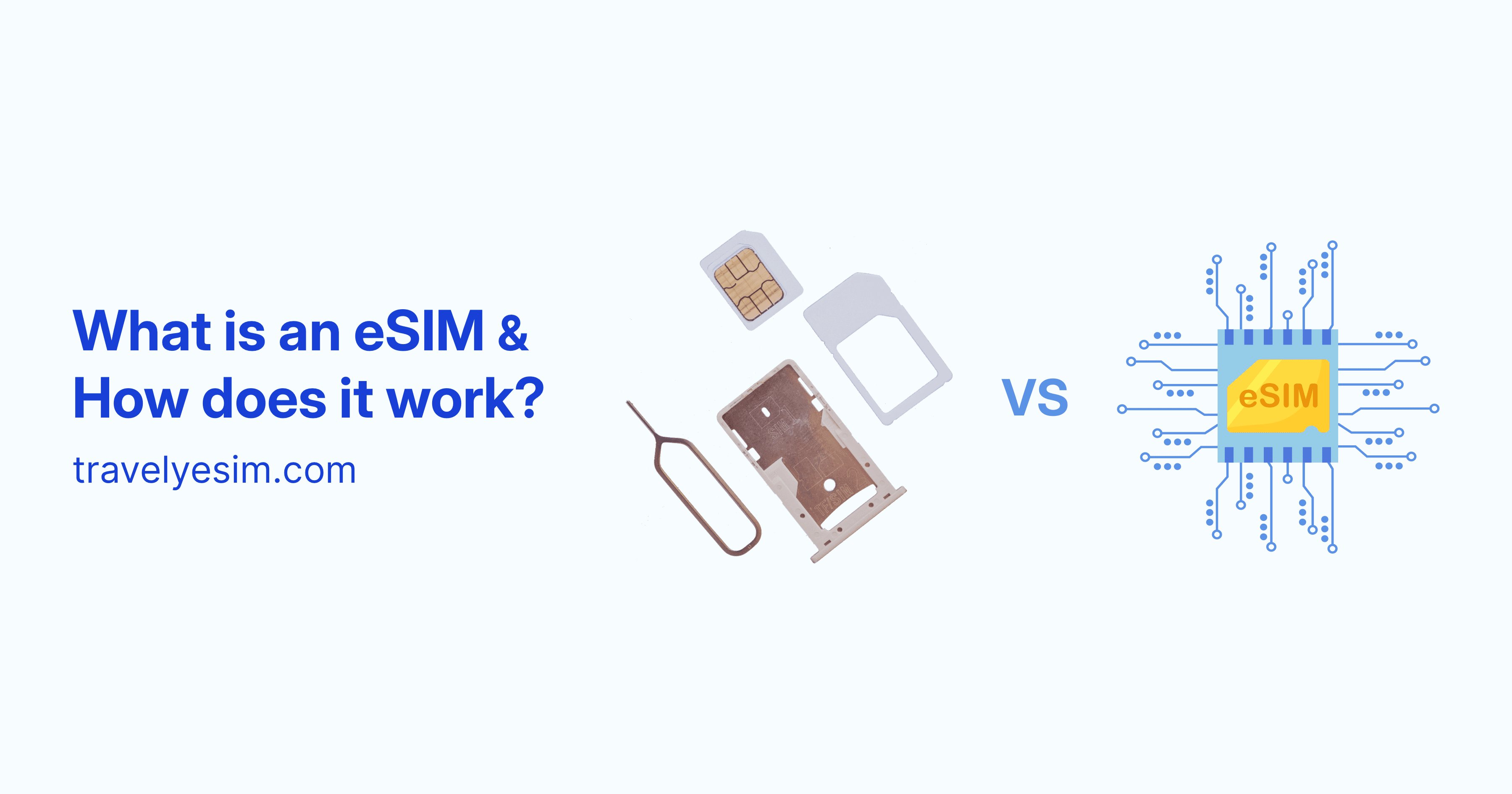What Is an eSIM and How Does It Work?

If you’ve ever switched SIM cards at an airport, juggled tiny plastic trays, or hunted for a local data plan after landing, there’s a smarter way to stay connected. Enter the eSIM, the next generation of mobile connectivity that eliminates the need for physical SIM cards.
Let’s explore what an eSIM is, how it works, and why it’s transforming the way travelers connect around the world.
What Is an eSIM?
An eSIM (short for embedded Subscriber Identity Module) is a digital SIM card built directly into your device. Unlike traditional SIM cards that you insert physically, an eSIM is a small chip embedded in your phone, tablet, or smartwatch that lets you activate a mobile plan instantly. No plastic card required.
According to Wikipedia, eSIM technology follows the eUICC (Embedded Universal Integrated Circuit Card) standard, which allows you to remotely download and manage multiple mobile profiles on the same device.
In other words: You can switch carriers or activate a local data plan in minutes, without ever removing your SIM tray.
How Does an eSIM Work?
Instead of being tied to a physical card, eSIMs store your carrier information digitally. Here’s how the process works:
- Your device has a built-in eSIM chip. This acts as a rewritable SIM card.
- You purchase a mobile plan from an eSIM provider (like Travely eSIM).
- You activate the plan by scanning a QR code or entering an activation code in your phone’s settings.
- The eSIM profile downloads to your device, allowing you to connect instantly to the provider’s mobile network.
Once installed, you can easily switch between eSIM profiles, making it ideal for frequent travelers or users who need both personal and business numbers on one device.
An eSIM works like a normal SIM card, but you don’t need to insert anything physical. Everything happens digitally.
Why eSIM Is a Game-Changer for Travelers
Traditional SIM cards have always been a hassle when traveling: finding a local shop, dealing with language barriers, or waiting for activation. With an eSIM, that process is nearly instant.
Here’s why eSIMs are transforming travel connectivity:
- Instant activation: buy and install your plan before you land.
- Keep your home number: use your physical SIM for calls and your eSIM for data abroad.
- No more swapping tiny cards: everything is digital and secure.
- Regional or global coverage: many providers offer plans that work across multiple countries.
eSIM vs. Physical SIM: Key Differences
| Feature | Physical SIM | eSIM |
|---|---|---|
| Format | Plastic card you insert manually | Embedded chip built into the device |
| Activation | Requires visiting a store or inserting SIM | Activated digitally via QR code or app |
| Switching carriers | Requires new SIM card | Done remotely in settings |
| Multiple profiles | One SIM = one network | Can store multiple profiles simultaneously |
| Loss or damage | Can be lost or damaged physically | Permanent inside the device |
| Ideal for travelers | Requires a physical local SIM or expensive home carrier roaming | Activate travel eSIM online instantly |
This flexibility makes eSIMs particularly useful for digital nomads, remote workers, and frequent flyers.
How to Know if Your Device Supports eSIM
Most flagship phones released since 2018 support eSIM technology, including the latest iPhones, Google Pixels, and Samsung Galaxy models.
Here’s how to check:
- iPhone: Go to Settings → Cellular → SIMs → Add eSIM
- Android: Go to Settings → Connections → SIM manager → eSIMs → Add eSIM (steps may vary slightly depending on your device or manufacturer)
If you see an “Add eSIM” or “Download a SIM” option, your device is compatible.
You can check whether your device supports eSIM on your device manufacturer’s website before purchasing.
Limitations and Considerations
While eSIMs offer convenience, they do come with a few caveats:
- Some carriers still don’t support eSIM activation.
- Device lock-in: Carrier-locked phones might not allow eSIMs from other providers.
- Data-only plans: Many travel eSIMs don’t include voice or SMS services.
- Transfer issues: Moving an eSIM to a new phone can be more complex than swapping a SIM card.
Despite these, the pros significantly outweigh the cons, especially for travelers seeking flexibility.
The Future of Mobile Connectivity
The adoption of eSIM is accelerating worldwide. Many new devices now ship without SIM trays, signaling the industry’s move toward fully digital mobile experiences.
The technology is expected to become the default standard in smartphones, wearables, and even IoT devices over the next few years.
For travelers, this means greater accessibility, more competition, and lower data costs, all from the convenience of your phone.
Final Thoughts
The eSIM isn’t just another tech upgrade. It’s a major shift in how we connect to mobile networks.
It offers flexibility, speed, and simplicity, all without the physical hassle of traditional SIMs. Whether you’re a frequent traveler, a digital nomad, or just someone tired of changing SIM cards, an eSIM is the easiest way to stay connected across borders.
Want to Try an eSIM for Your Next Trip?
With Travely eSIM, you can explore new destinations with instant connectivity, local rates, and zero roaming fees.
